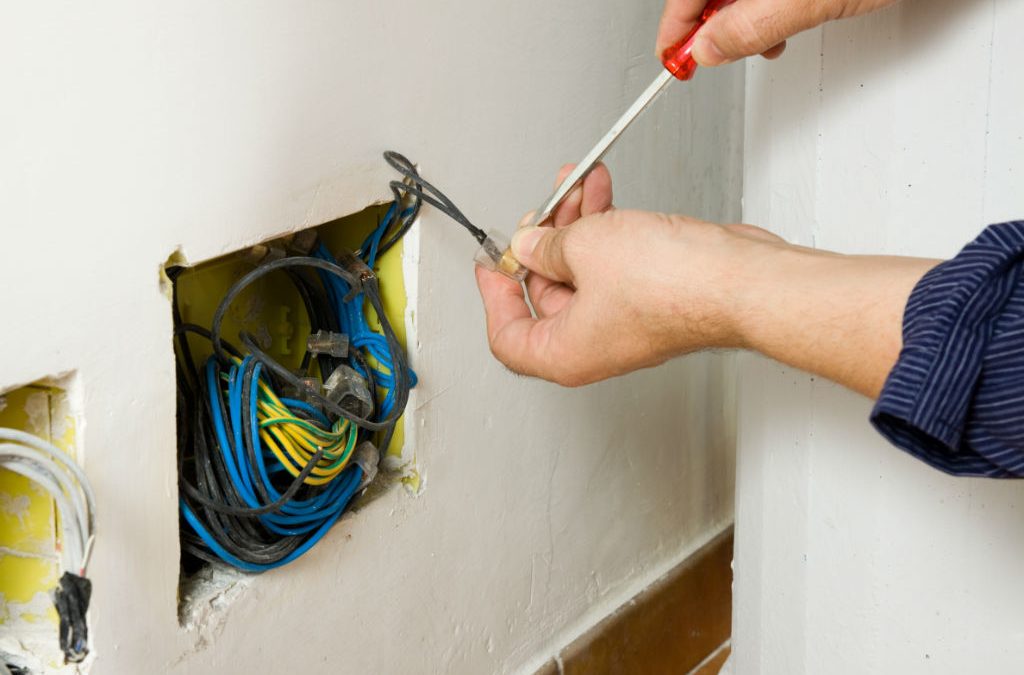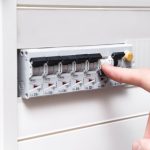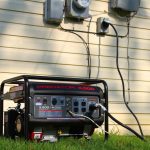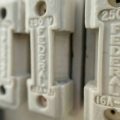If you’re renovating or upgrading your home, rewiring might not be the most exciting item on your to-do list. Today’s homes in Queensland rely on far more power than they used to, with air conditioning, smart devices, EV chargers, and high-powered appliances all placing extra strain on outdated electrical systems.
If your home’s wiring is outdated or you’re planning ahead, it’s important to understand what rewiring will cost. Static Electrics will break down the price drivers and help you make confident, budget-friendly choices.
Have it inspected by a reputable licensed electrician, Assuming that your house does indeed need old electrical wiring replaced, the million-dollar question arises, how much is rewiring your house going to cost?
Cost of Rewiring Your House
As an example, consider a townhouse built in the 1990s. While it may still be functional, the original wiring could struggle to keep up with the demands of today’s appliances, devices, and home office setups.
Homes built during that time often lack dedicated circuits for air conditioning, dishwashers, or electric cooktops, and they may still use outdated switchboards without modern safety switches (RCDs). The wiring insulation may also be deteriorating, and there’s a chance that some power points and light fittings no longer meet current electrical standards.
In a case like this, a full house rewire might cost anywhere from $5,000 to $10,000, depending on the layout, access points, and whether patching or plasterwork is required after installation. Note that if you’re adding new outlets, switches, or upgrading your electrical switchboard to a higher amperage, these upgrades will add to the overall cost.
Is It Necessary to Rewire Your Home? Static Electric Answers
Rewiring isn’t always necessary, but there are situations where it becomes an urgent matter. As experts in residential electrical systems, the Static Electrics team can help you determine when rewiring is the right choice. We’ll assess whether the need stems from outdated wiring, safety risks, or increased power demands.
Old Wiring
Homes built before the 1980s often have electrical wiring that no longer meets current Australian safety standards. Today, AS/NZS 3000:2018, also known as the Australian/New Zealand Wiring Rules, sets strict guidelines for safe electrical installation.
These standards require the use of modern materials like copper wiring, proper circuit protection, and safety switches (RCDs) on all final subcircuits to prevent electric shock and fire hazards.
Back in the 1980s and earlier, homes weren’t built to handle the number of electrical devices we rely on today. Air conditioning units, kitchen appliances, computers, chargers, and entertainment systems are just a few of them.
If your home still contains outdated systems like knob-and-tube wiring or aluminium wiring, there’s a strong chance you’re overloading your circuits without realising it. These older systems not only fall short of current capacity demands but can also pose serious safety risks.
Frequent Electrical Issues
If you’re experiencing frequently tripped circuit breakers and safety switches, these are signs that your wiring may be overloaded or faulty. Other signs that may point to faulty or overloaded wiring include:
- Flickering lights when multiple appliances are running at once
- Burning smells coming from power points or behind walls
- Buzzing sounds from switches or outlets
- Discoloured or scorched power outlets
- Warm or vibrating wall plates (sign of excessive current flow)
- Frequent blown fuses even with minimal appliance use
- Power points that spark or fail to work properly
- Old-style fuse boxes instead of modern switchboards with RCDs
These problems are common in older homes we see across Queensland. A licensed electrician will know exactly what to look for and whether rewiring is the best solution.
Renovations
Modern renovations involve updating kitchens, bathrooms, or adding new rooms, all of which increase your home’s electrical demand. Older wiring systems may not have the capacity or safety features to support high-powered appliances like ovens, induction cooktops, air conditioning units, or even modern lighting systems.
Electricians commonly uncover several issues during renovation work, including:
- Old or brittle wiring that’s no longer safe with current standards
- Lack of safety switches (RCDs) on circuits, which are now mandatory for personal protection
- Insufficient power outlets, may lead to overreliance on power boards or extension cords
- Outdated switchboards that need upgrading to handle the additional load
Limited Outlets
Many people end up relying on double adapters and extension cords just to keep up with the growing number of devices. It’s common to see a single outlet powering a TV, sound system, and internet modem all at once. In bedrooms, it’s not unusual to find families stretching cords across the floor just to charge everyone’s phones or plug in a lamp. While it might feel like a harmless workaround, this kind of setup can easily overload circuits, trip breakers, or worse, pose a fire hazard.
Older homes often have fewer outlets, leading to over-reliance on extension cords. This can overload circuits and increase the risk of fire. So adding extra power points can require rewiring.
Flickering Lights
Even with good wiring, flickering lights can occur occasionally, but when it happens on a regular then it may be a sign that your electrical wiring isn’t all it’s cracked up to be. Technically, flickering lights are caused by voltage fluctuations or loose electrical connections. This can be due to worn-out wiring insulation, corroded terminals, or overloaded circuits that can’t handle the current draw of modern appliances. If multiple lights in different areas flicker at the same time, it may suggest a problem at the switchboard or with the main service connection.
Shocking switches
If you feel a slight tingle or shock when touching a light switch or power point, it’s a strong sign that something is wrong. This usually means that a wire in the circuit is shorting out to the metal conduit or housing that encloses the wiring. It could also indicate that a wire has lost its insulation, exposing live current.
Shocking switches can be extremely dangerous, especially for children. Even a small electrical shock can signal a serious underlying fault that needs immediate attention from a licensed electrician.
For safety reasons, when confronted with electrical problems of this nature it pays to call in a professional for an electrical safety inspection.
What’s Involved in the Rewiring Process?
- Site Inspection & Assessment (1-2 hours) – Master electricians will inspect your current wiring & checks for faults.
- Quote & Planning (1-3 business days) – Expect a detailed quote and plan, including material needs and circuit layout.
- Power Shut-Off & Prep (1 working day) – The main power is turned off, furniture is moved if necessary, and walls or ceilings are prepped for access.
- Old Wiring Removal (1-2 days; depending on access) – Existing wiring is safely removed, especially if it’s damaged, outdated (e.g. aluminium wiring), or non-compliant.
- New Wiring Installation; 2–5 days (depending on home size) – New copper wiring is installed throughout the home, often with added circuits and extra power points for modern needs.
- Switchboard Upgrade (1 day) – If required, the old switchboard is replaced with a modern unit that includes circuit breakers and safety switches (RCDs).
- Safety Testing (Half a day to 1 day) – Static Electricians will test all wiring, outlets, and safety switches to guarantee everything meets AS/NZS 3000:2018 standards.
- Patching & Clean-Up (1–2 days) – Any holes made in walls or ceilings are patched. Painting or plastering may be left to another trade.
Conclusion
Rewiring your house might be an expense you don’t particularly want to incur. However, if your existing wiring poses a major fire risk, then ultimately it’s one of the best investments that you can make. Studies have found up to 40% of house fires are caused by electrical faults.
Consult with a licensed electrician to assess your home’s wiring needs and to carry out any necessary work safely and efficiently. We can quickly dispatch a Sunshine Coast electrician or a Brisbane electrician to your home for a quote and assessment today.
Frequently Asked Questions
How disruptive is rewiring a house?
Rewiring a house is moderately to highly disruptive, especially if you’re living in the home during the process. Electricians will need to access wiring behind walls, ceilings, and floors. This can involve removing plaster, lifting floorboards, and cutting into walls to run new cables. Some families choose to vacate the home temporarily.
How much value does rewiring a house add?
Rewiring a home can add significant value, both in market resale potential and in long-term safety. While it doesn’t add value in the same visual way a kitchen or bathroom renovation might, modern wiring increases buyer confidence and can be a major selling point.













